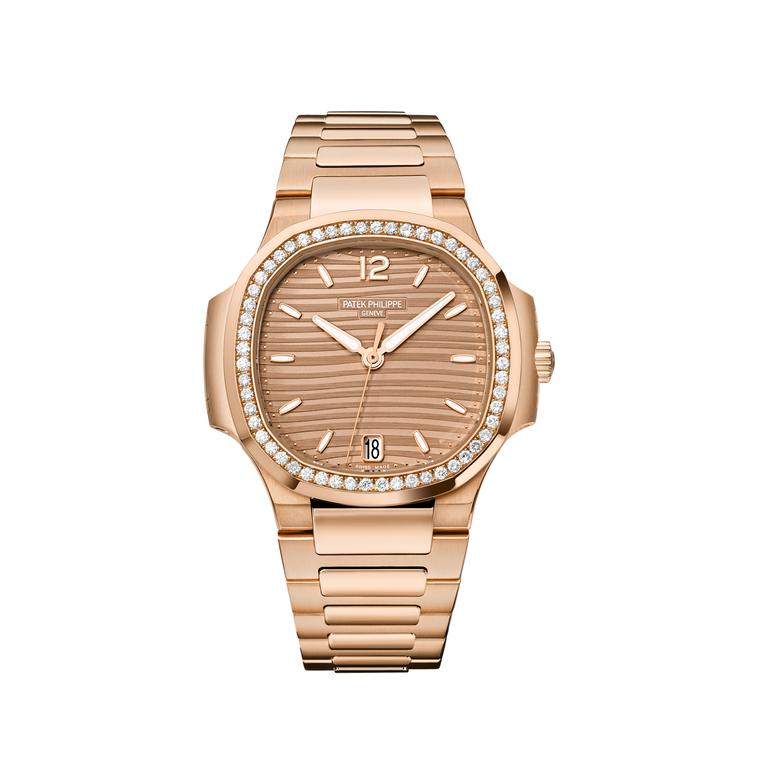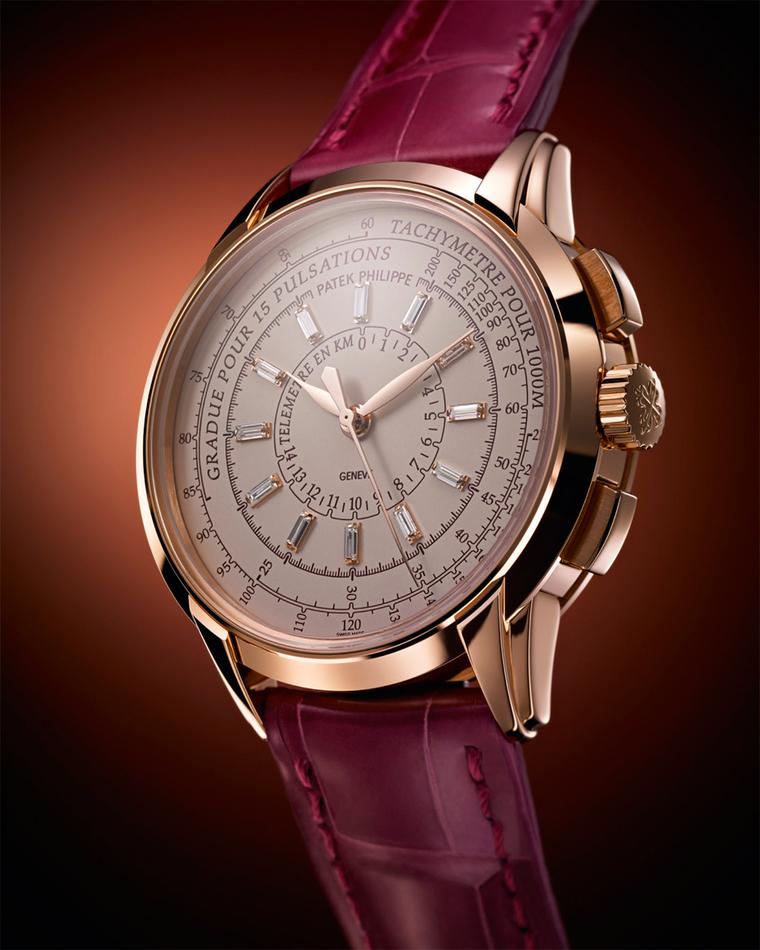
Looking out from the top floor window of the flagship Patek Philippe salon in Geneva, with its sumptuous display of watches, the view is almost too perfect to be true. In the foreground, Geneva’s famous Jet d’Eau spurts a column of water high into the air, cascading back down into the clear waters of Lake Geneva. The deepest, largest and bluest of all Switzerland’s lakes, it stretches out in a croissant shape as far as the eye can see while, on the right, the majestic snow-covered peaks of the Alps pierce the blue skies.
Countless painters, artists, actors and writers have succumbed to the hypnotic beauty of Lake Geneva over the centuries. Lord Byron, the extravagant Romantic poet, hired a boatman and spent most of his sojourn in Geneva discovering the lake and prompting this line in a sonnet: “How much more, Lake of Beauty! do we feel, in sweetly gliding o’er thy crystal sea.”

For the Maison’s grand 175th anniversary in 2014, the Stern family - the sole owners since 1932 - decided to create a collection of commemorative Patek Philippe watches, pocket watches and dome clocks inspired by Lake Geneva. Thematically united by the lake, the artwork featured on the miniature dials and casebacks is a virtuoso display of Patek’s dominion of decorative arts and rare handcrafts, kept alive thanks to the determination of the Stern family. Many of the original paintings that have inspired the lakeside views of this 175th anniversary collection form part of Philippe Stern’s personal collection.
Read more about why Patek Philippe watches are the best in the world
The art of miniature painting on enamel is intimately linked to Geneva’s watchmaking history, although it was in fact a French discovery attributed to Jean Toutin in the 1630s. Royal courts around Europe soon got wind of this precious new artistic technique and commissioned sumptuous pieces from French craftsmen. The unusual thing here is that almost all the enamellers were Protestant. When Louis XIV decided to persecute and banish the Protestants from France in 1685, literally all the Protestant enamellers fled the country and set up shop in Geneva. As a bastion of Calvinism and Protestant Reformation, the exiled artisans were welcomed and married their unique skills to the nascent industry of watchmaking.

In pride of place in the 175th Rare Handcrafts Commemorative collection is Dawn on the Lake, a pocket watch entirely decorated with miniature painting and paillonné enamelling from the hand of Anita Porchet - one of the most talented and respected enamellers of our age. This extraordinary work of art, which required more than 40 basic enamel colours plus the addition of paillons, or white gold spangles, to bring the water to life, pays tribute to paintings of Lake Geneva by a host of Swiss painters. On the back of the watch a painting by Louis Baudit, known as Morning off Cologny (the same location Byron and Shelley had rented homes), depicts the traditional barques with their sails billowing in the gentle early morning breeze. Turning the pocket watch over to the dial side, Porchet has fused works of art by five other painters, including the abstract scene of Paul Klee’s boats, to create an enchanting whole. This exquisite white gold pocket watch is a unique piece and comes on a white gold stand with hand-engraved and enamelled leaves.

Two paintings by Swiss painter François Bocion have also made their way onto the dial of two white gold Calatrava watches. Applied with fine brushes to a base layer of enamel, the artist recreates the original on a miniature round canvas with enamel colours mixed with oil instead of water. Each dial required 12 firings at temperatures of around 800ºC, and as any enameller will confess, you never know what might happen to the colours during the firing process. Both Patek Philippe watches are limited edition pieces and are equipped with calibre 240, an ultra-thin automatic movement that can be viewed by lifting a hinged dust cover on the caseback.
See more Patek Philippe Calatrava watches
Cloisonné enamelling has been used to create the dials of a series of Calatrava watches depicting scenes of the traditional barques on Lake Geneva. In cloisonné enamelling, a fine gold wire - measuring less than 0.5mm in diameter - is manipulated to form the outline of a design and soldered to the base plate. The cells formed by the wire partitions are then filled with enamel and fired until the right tone and effect are obtained. Presented in 38.6mm white gold cases with a hinged dust cover that can be lifted to see the ultra-thin calibre, the greatest difficulty I foresee for this series of limited edition watches will be deciding which is the loveliest.
In yet another branch of enamelling, this Neptune dome table clock is decorated with plique-à-jour enamelling. Similar to cloisonné in that the enamel is applied in cells, the big difference here is that there is no backing or base, so the light can shine through the translucent enamel. Imagine the difficulty of creating something like a flat stained-glass window and then getting it to comply with the round silhouette of Patek’s celebrated dome clocks.

Engraving is another skill practiced at the Maison as the Grandmaster Chime - the brand’s most complicated wristwatch in 175 years with 20 complications and a Patek Philippe price tag of SFr 2.5 million - so eloquently attests, with sumptuous engraving covering every gold surface of the case and lugs. A set of handsome Calatrava watches and four pocket watches feature hand-engraved gold dials with scenes of Geneva harbour and the lake. Each dial required an average of 150 hours of work as the engraver delicately wielded the burin to extract life, and chase depth and volume into a flat gold surface using a low-relief technique. Requiring immense concentration, dexterity and patience, the slightest distraction or the application of too much pressure can mean the destruction of a work in progress.
Read more about the Patek Philippe Grandmaster Chime watch

The most unusual and perhaps surprising models of this commemorative collection are those made using wood marquetry. Normally associated with furniture, notably with the exquisite pieces of furniture made by André-Charles Boulle, a marquetry maker has to cut and combine veneers of wood to create a work of art on a miniscule surface, the size of a large coin. Although marquetry has been around since Ancient Greece, Patek Philippe pioneered the use of this technique on watch dials following a request from a customer. The Calatrava models decorated with marquetry are inspired by old postcards of Lake Geneva, with the faded brown of ageing paper perfectly captured. The rose gold pocket watch combines wood marquetry on the dial with a hand-engraved case that echoes the wavy surface of the water.
William Wordsworth was another poet enamoured of Lake Geneva. “A lake,” he wrote, “carrries you into recesses of feeling otherwise impenetrable” and into realms of exalted creativity in the case of these beautiful lake-inspired Patek Philippe watches.















